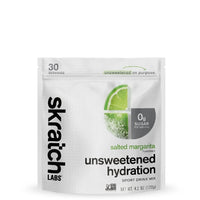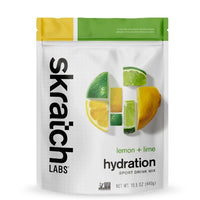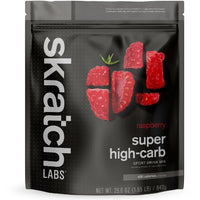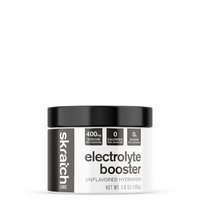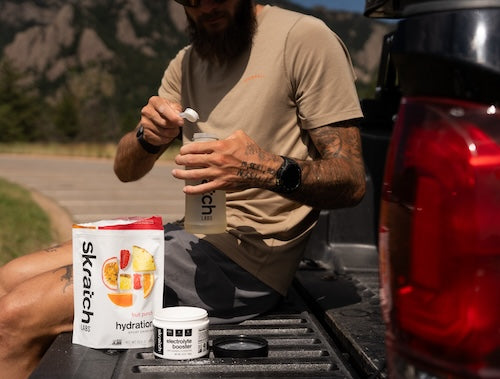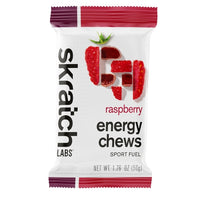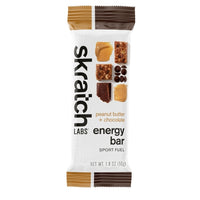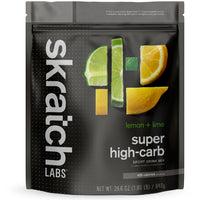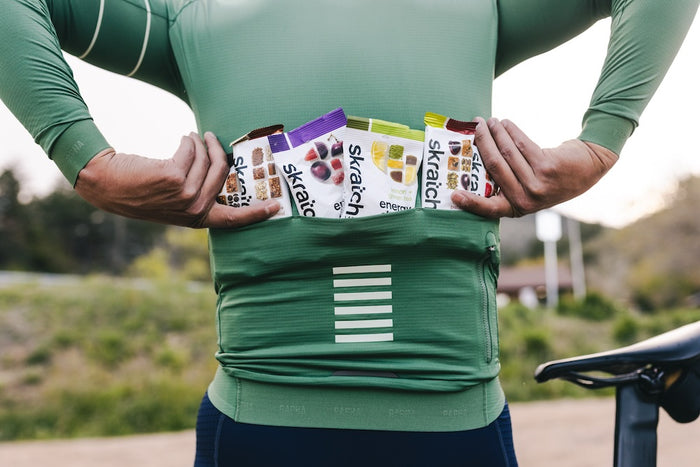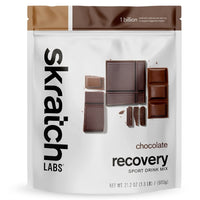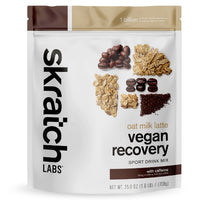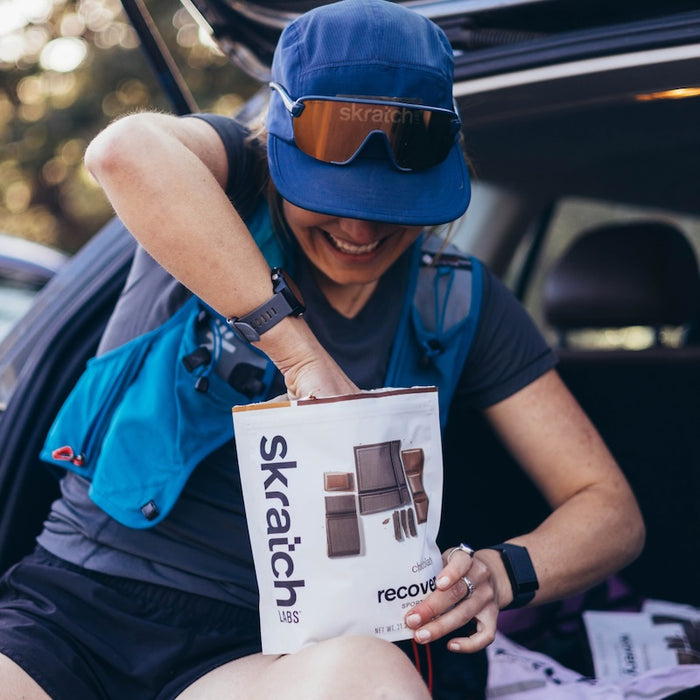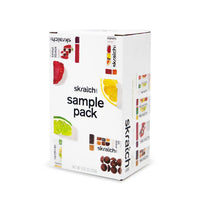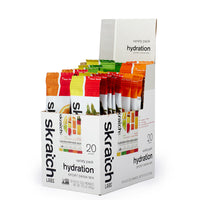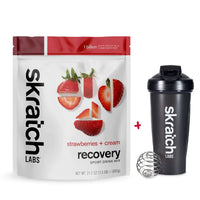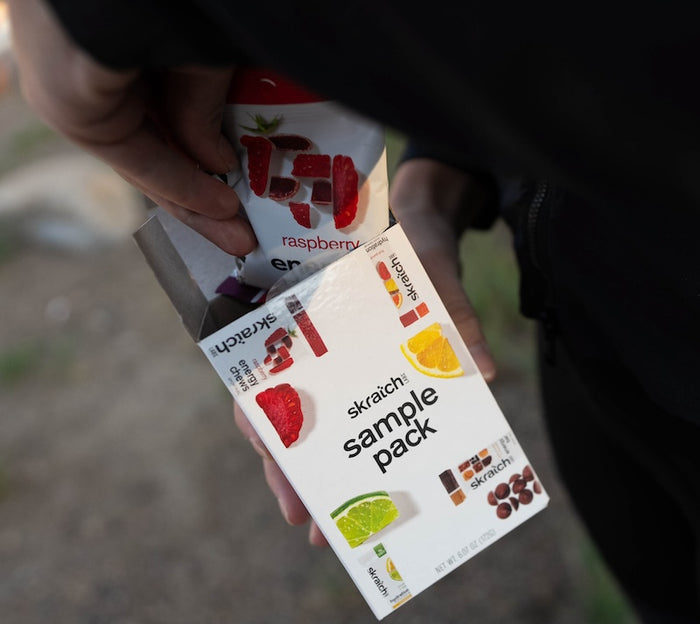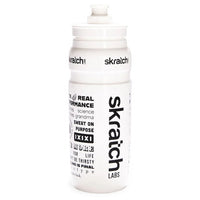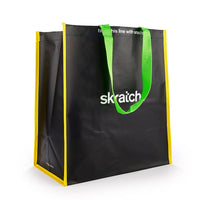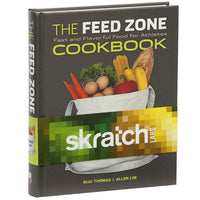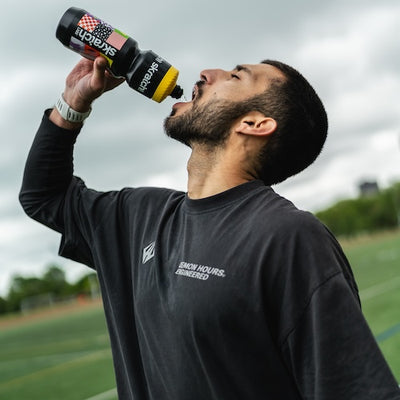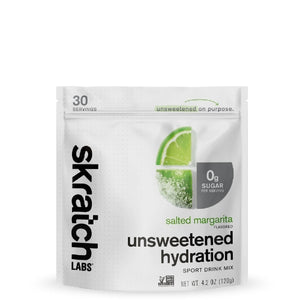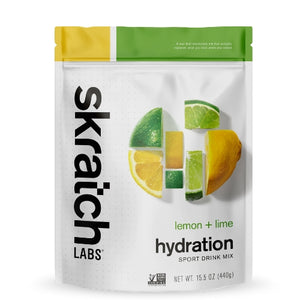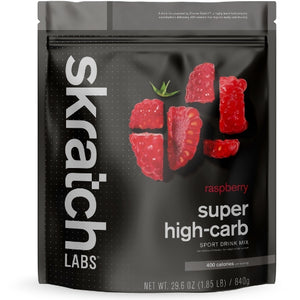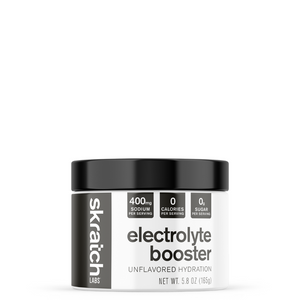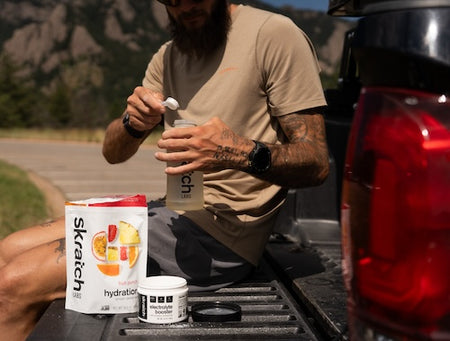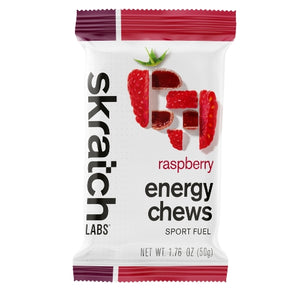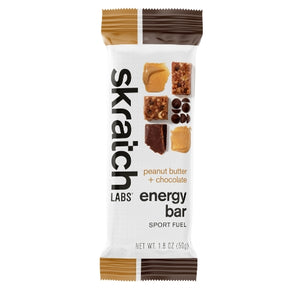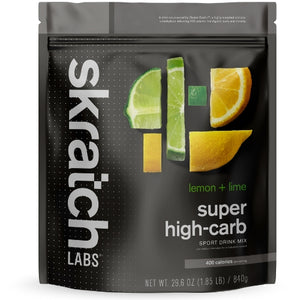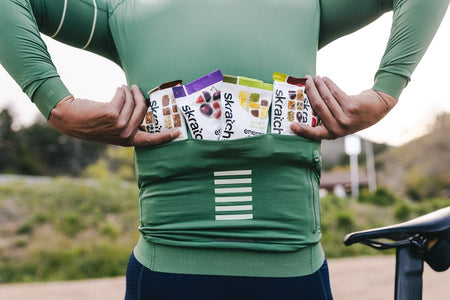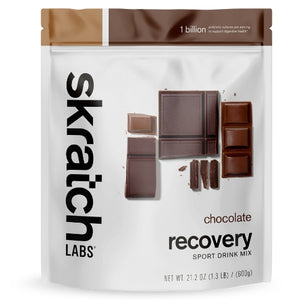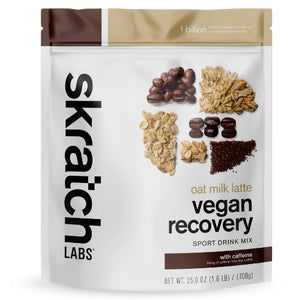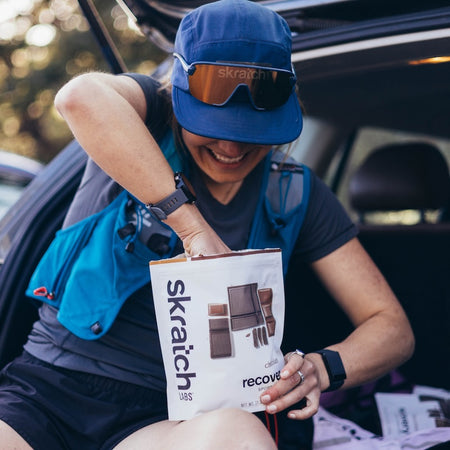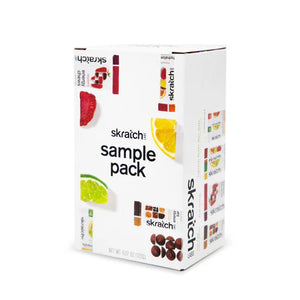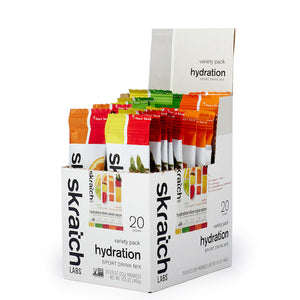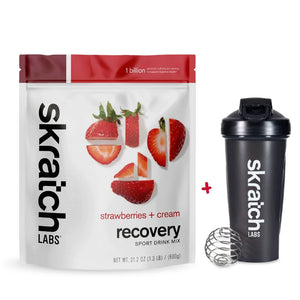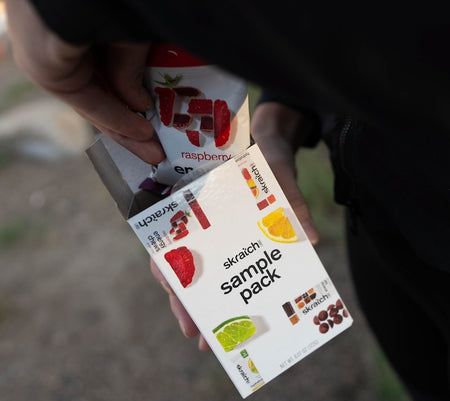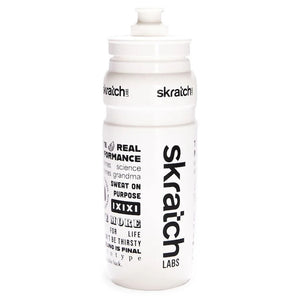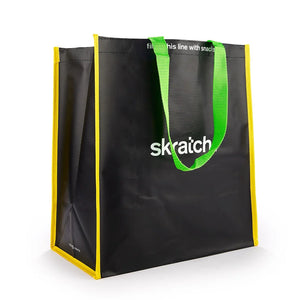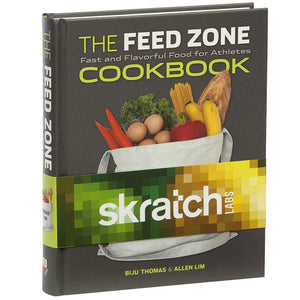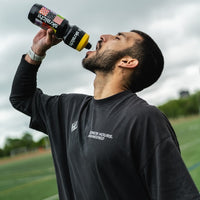This guideline is intended to help you create your own plan. As you know nutrition can be tricky and is highly individual so there isn't really one magic bullet. Science is a process for discovering answers and when it comes to our own bodies we are each our own scientific experiment. To that end, we simply encourage you to try our product and see if it works for you. We recommend trying out our different products, flavors, and Feed Zone recipes to see what works for your needs. The amount of food, water, and salt you’ll need will depend on a host of variables including your fitness level, the exercise intensity, the duration, and the environment. Given all the possibilities here, we tend to find that listening to one’s body and bringing ample supplies to allow one to improvise often works better than creating a rigid timetable that may or may not meet a dynamic environment.
Two main factors play into how you fuel, Sweat/Sodium loss rate and Caloric Deficit.
Sweat rate
One of the easiest ways to get at your sweat rate is to use a scale to weigh yourself before and after a workout. Any weight loss (where 1 lb is equal to 16 oz of water) plus the amount of fluid consumed while working out is your total sweat loss. That all said, if you're gaining weight over the course of a workout, then you are drinking too much. Ideally, try not to lose more than 3% of your body weight from dehydration.
An important consideration, however, is that rehydration during exercise isn't just about water balance, it's also about sodium balance. What this means is that to adequately hydrate, you need to replace both the water and the sodium that you lose during exercise. Unfortunately, sweat sodium is highly individual and can vary anywhere from 400 mg to 2000 mg per liter of sweat, with an average somewhere between 700-900 mg per liter (Skratch Sport Hydration is 800 mg per liter). As a general rule of thumb, if you're not consuming enough salt relative to water, you'll find yourself needing to urinate frequently despite losing body weight due to sweat loss. On the other hand, if you're consuming too much salt relative to water, you'll find yourself wanting to drink more water and potentially gaining weight as the high salt intake might drive you to drink at a greater rate than your sweat loss.
Remember, hydration is about 2 needs:
- Water Balance - Measure with a scale pre & post workout
- Sodium Balance - Measure by listening to thirst
So....drink to thirst with Sport Hydration Mix while you are working out or racing and if you are underweight after your workout/race add more salt!
Aside from calories consumed through your hydration mix, you will want to manage how many total calories you are taking in, try this calculation:
- Figure out how many calories you are burning. The fitter you are, the harder you are working; the less efficient you are, and the bigger you are, the more calories you’ll be burning.
As a point of reference, the best athletes in the world are hard-pressed to burn more than 1,000 Calories per hour for more than 3 hours. - Figure out how many of the calories you are burning are coming from fat versus carbohydrate. We use primarily fat and carbohydrate during exercise and almost no protein except under extreme situations. At high exercise intensities we burn mostly carbohydrate, and at low intensities we burn mostly fat. At 50% of maximal aerobic capacity, about 45–55% of calories come from fat; at 75% of max this drops to about 10–30%; and at max (100%), none of our calories come from fat.
- Figure out how many carbohydrate calories you have stored as glycogen. Because fat stores are ample, it’s almost impossible to run out of it during exercise. But glycogen stores are limited, and once it’s gone, it’s impossible to maintain high intensity, difficult to maintain your blood sugar (which is critical for fueling your brain and nervous system), and harder to burn fat, all of which can cause fatigue. On a moderate-carbohydrate diet (40–50% of total intake) an athlete will have about 1,000 Calories available for lower body exercise, and on a high-carbohydrate diet (60–70% of total intake) those stores can double to about 2,000 Calories.
- Subtract the calories burned from the total calories coming from fat and the total calories of stored glycogen to calculate what you need to eat. For example, let’s say that you burn 2,000 Calories over a 3-hour bike ride and that 500 of those calories come from fat and 1,000 come from stored glycogen. In this scenario, subtracting 2,000 Calories from 1,500 Calories (total calories from fat and carbohydrates) gives a 500 Calorie deficit.
– 2000 Calories burned
+500 Calories from fat
+1000 Calories stored as glycogen
500 Calorie carbohydrate deficit
If there’s a deficit, eat. If there’s not, don’t eat.
As a general rule of thumb, for activities lasting more than 2 hours, if you eat at least half the calories you burn each hour, you’ll almost always be consuming an adequate number of calories to keep you going.
For an easier workout:
If the workout isn’t too hard or long, some may be able to just get up and go (typically not ideal for women), especially in the morning when you’ve just gotten up. The unique thing about sleep is that it’s essentially an overnight fast that re-adjusts the body’s hormonal and metabolic environment, keeping blood sugar steady despite a lack of food. You can take advantage of this in the morning by simply getting up and starting your workout, then having breakfast afterward. This works especially well for lower intensity aerobic workouts where your primary fuel source is fat. So if it’s early, the intensity or duration isn’t that great, and you’ve gotten plenty of sleep, just get up and go.
For shorter and lower intensity efforts in moderate temperatures, drinking plain water is probably fine if you listen to thirst, since losing a little bit of body water during shorter durations and cooler temperatures aren't likely to be a problem. But, for longer and harder intensity efforts in high temperatures where water and sodium loss can be very high, drinking plain water to thirst isn’t optimal since losing beyond 3% of your body weight in water can result in significant drops in performance and potential heat-related illnesses.
If you are going at it later in the day make note of how you hydrated and ate during the day, don't set yourself up to bonk. Maybe you were not great about hydrating during the day, you can preload and have a serving of Skratch headed into your workout. If you have not had an ample meal 3 hours prior and you’re worried about not having enough energy for a hard workout, start eating and drinking right when you start the workout. What’s unique about exercise is that unless you’re at a very low exercise intensity, insulin is not normally released when we are exercising since working muscles can uptake sugar without the need for insulin. This means that if you start eating right when you start exercising you won’t experience the crash that is common if you eat too much an hour or so before a workout. You’ll often see athletes right at the start line shoving simple sugars down just before the gun goes off to give them a little boost. Beyond food, another common technique for many athletes is to drink a high to very high sodium solution like the Skratch Labs Wellness Hydration Mix (1500 mg sodium per liter) (*This product has been discontinued. If you would like to recreate, add 1 serving of Unsweetened Hydration Sport Drink Mix to 1 serving of our Sport Drink Mix) or Hyper-Hydration Mix (3500 mg sodium per liter) (*This product has been discontinued. If you would like to recreate, combine 3 servings of Unsweetened Sport Drink Mix to 1 serving of Sport Drink Mix to 500 ml of water) right before very hard and long workouts in moderate to high heat, when getting adequate hydration might be a problem. By drinking a high sodium solution, right before exercising in the heat, the drop in blood pressure and extra space created by expanding blood vessels that are dilating to bring hot blood to the skin to keep you cool, can be offset. But, be careful. Drinking too much at the onset of exercise if it’s cool or when the exercise intensity is low will likely just make you need to pee 20-30 minutes into your workout.
For harder efforts in the 1-2 hour range keep these things in mind:
1) Hydrate First, Fuel Second. There’s a philosophical problem called Buridan’s Ass, where a donkey, equally as thirsty as it is hungry finds itself exactly equidistant from a barrel of hay and a barrel of water. Given that the donkey wants water just as bad as it wants food and given that it is exactly the same distance away from both, what does the donkey do? Some philosophers believe that the donkey will die because it’s unable to make a decision. Others believe that the donkey’s free-will has nothing to do with the problem and that some external circumstance like a butterfly flapping its wings will move the donkey either towards the water or hay. From a physiological perspective, philosophy doesn’t matter. In most situations, the donkey needs to drink first then fuel. This is especially true during exercise that causes one to sweat a lot. When it’s warm or hot and the intensity is high, the fluid and sodium we lose through our sweat is more likely to negatively impact our performance before depleted fuel stores do. Moreover, a low carbohydrate solution (4 grams of carbohydrate per 100 ml of water) with ample sodium (700-800 mg of sodium per liter) can actually hydrate better than water alone while also providing some fuel. This is because the active transport of sugar and sodium helps to expedite water movement across the small intestine into the body. Thus, when it’s really hot and sweat rates are high, focusing on hydrating with a low carbohydrate solution can provide more than enough energy since the volume of drink needed is also high. With that in mind, there are very few instances, if any, where drinking water alone is better than using a low carbohydrate drink mix with ample sodium. Generally speaking, replacing at least half the calories you burn per hour and keeping your hydration loss under 3-4% of body weight will keep you adequately hydrated and fueled for most workouts lasting anywhere from 2 to 8 hours.
2) Drink When Thirsty. I often hear people say that if you start drinking when you’re thirsty, it’s already too late and that you’ll be too dehydrated to fix it. But, that hasn’t been my experience with elite athletes competing in extreme environments. If anything, if someone drinks beyond their thirst, they run the risk of diluting their blood’s sodium concentration - a phenomena called hyponatremia that can lead to a host of problems and even death in extreme cases. Thirst actually works to try and help control one’s blood sodium level. In fact, one of the important cues for thirst is an increase in blood sodium concentration. As we sweat and lose more water than salt in that sweat, blood sodium concentration increases which makes us thirsty. If we drink plain water, we don’t need to drink as much water as we’ve lost because we lose an appreciable amount of sodium in our sweat (600 to 1500 mg of sodium per liter of sweat). This means that with plain water, we stop being thirsty before we’ve replaced all the water we’ve lost. Said differently, thirst controls sodium balance, not water balance. And this feature of thirst is actually a good thing because even though losing water can be bad for our exercise performance, screwing up our blood’s sodium balance can be bad for life. The easy solution is to replace both the water and sodium that you lose in your sweat. This allows thirst to be a better trigger for maintaining both water and sodium balance. Still, listening to one’s sense of thirst is an important way to time your fluid intake regardless of the type of drink you’re using because keeping one’s sodium balance in check takes priority over water balance. That said, if you weigh yourself before and after exercise to get a sense of your water loss and you are constantly finding that you’re more than 3 to 4% dehydrated and/or you find yourself more dehydrated than your peers and suffering because of it, consider that water volume by itself may not be the problem. If you’re drinking to thirst, you may not be getting enough sodium. Get enough of it and the timing tends to work itself out on it’s own if you listen to your body.
Unfortunately as noted earlier, everyone’s sweat is different. Some people lose just a little bit of sodium in their sweat (400-700 mg L) while others can lose a lot (1000-1500 mg L). To this end, realize that some salt in the range of 600-800 mg of sodium per liter of water, like that found in our Hydration Sport Drink Mix, is always going to be better than just plain water. In addition, if you think that you lose more sodium than others, you can have your sodium sweat concentration measured through a sweat test here at Skratch Labs, and use our higher sodium drink products like Wellness Hydration Mix (1500 mg L) and Hyper Hydration Mix (3500 mg L) to supplement your sodium needs and perform your best. *These products have been discontinued. To recreate, check out our How to Use Unsweetened Hydration Sport Mix blog for tips on recreating both Wellness and Hyper Hydration Mix.
To start experimenting for finding your balance of solid and liquid fueling based on your carb intake needs:

Remember there are a lot of different factors and you are your own experiment. So try it out and if you are still struggling or we can help with questions or feedback reach out! [email protected]
Click here for more info on timing your pre, during, and post workout nutrition.
